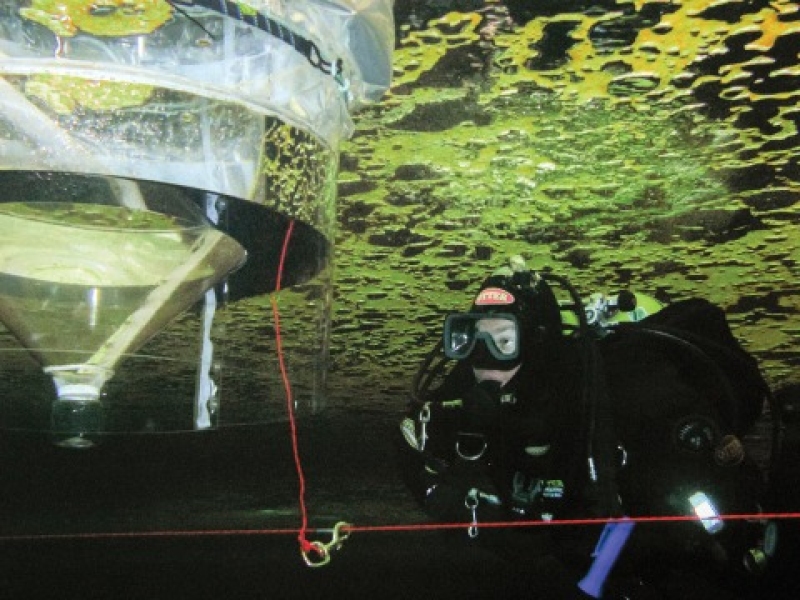NIWA marine ecologists, including specialist divers, are heading south shortly for the second stage in a range of experiments that take place under the ice in Antarctica.
The experiments involve divers placing specially made chambers on the underside of the ice at Granite Harbour to measure the effects of ocean acidification and warming on sea ice flora and fauna.
This year an eight-person team will head to the ice for a month. They will camp on the ice at Granite Harbour, about 150km from Scott Base, for the duration of the experiments.
All the equipment needed for living and working out of tents will be taken by wagon train across the ice from Scott Base, a journey that takes about 24 hours.
Expedition leader and marine ecologist Vonda Cummings said Antarctica New Zealand support staff will set up the camp and melt holes in the ice to enable the divers to access the sea and attach the chambers.
“Granite Harbour has got really good first year sea ice so there are great algal concentrations under the ice with no bumps or cracks that might confound our chamber results.
“It’s also got nice soft sediment underneath which is great for looking at the sea floor at the same time,” Dr Cummings said.
The chambers, designed by NIWA marine ecologist Neill Barr, measure the effects of specific changes on ecosystem processes such as primary production by algae, nutrient dynamics and the delivery of food from the sea ice to the sea floor.
The temperature and acidity of the seawater in the chambers can be manipulated and controlled to determine how climate change and ocean acidification could affect this fragile ecosystem.
Last year, the team were based at Cape Evans where the chambers were used for the first time.
“It was basically a trial to see if we could get good data out of them,” Dr Cummings said.
“They worked really well and were pretty easy to deploy but this time we want to try and do things better. We will be adding a few more instruments to measure a more things but will use the same design.”
The water temperature is about -1.9oC which limits divers to about 40 minutes under the ice at any one time.
The team must radio Scott Base daily to check in but other than that, there is no communication access.
“People can communicate with us through Scott Base if they need to but there is no emailing or Skype.”
Dr Cummings and her team are all experienced at conducting field work at Antarctica and know what to expect.
“It’s just a different way of working; you learn to cope with the cold and we’re working out of tents so there are challenges. We have no idea of what the weather will do – usually there’s a snow storm or two every season, which is not particularly nice but you just stay in your tent and don’t go far.”
A couple of the team members will travel with the wagon train across the ice with the others flying in by helicopter a few days later.
The research, led by Drs Cummings and Drew Lohrer, is funded by the Royal Society of New Zealand’s Marsden Fund (to Vonda Cummings and Drew Lohrer) and NIWA, with logistical support from Antarctica New Zealand. Analysis of the experiments will take place next year.
A second group of NIWA scientists will travel to Antarctica later in the year to install and maintain atmospheric measuring equipment.


